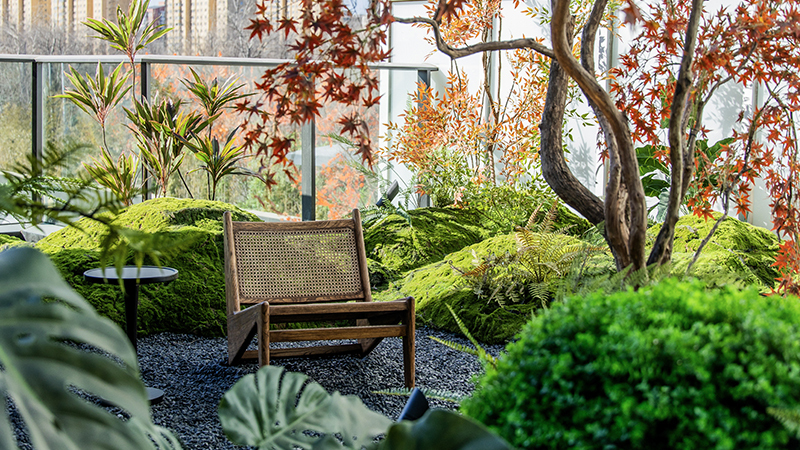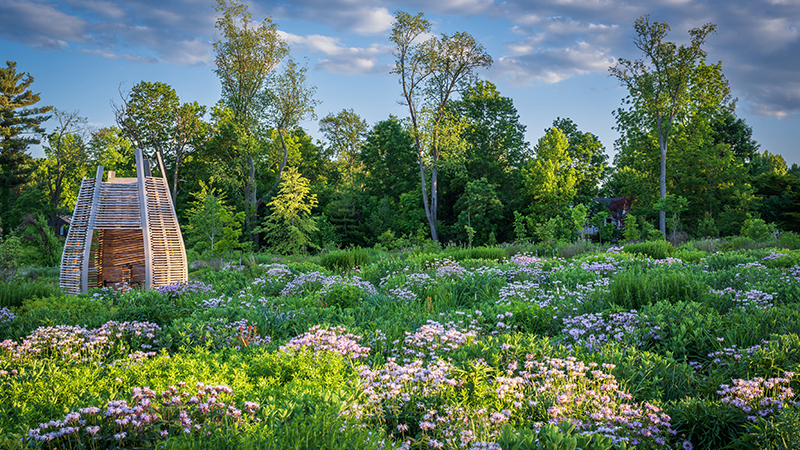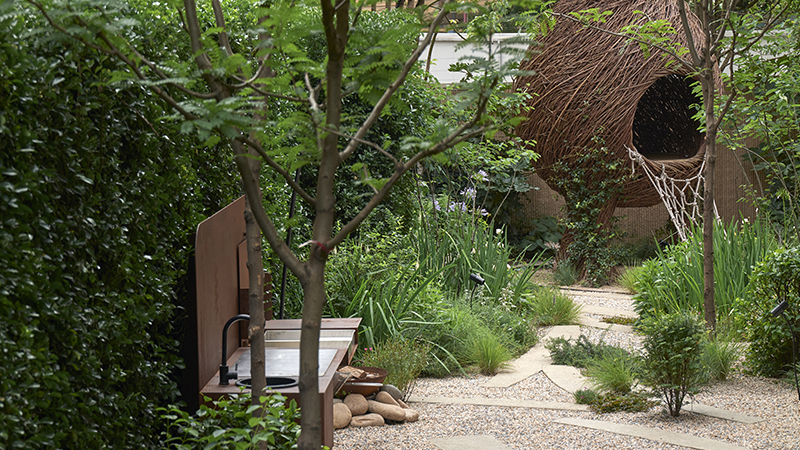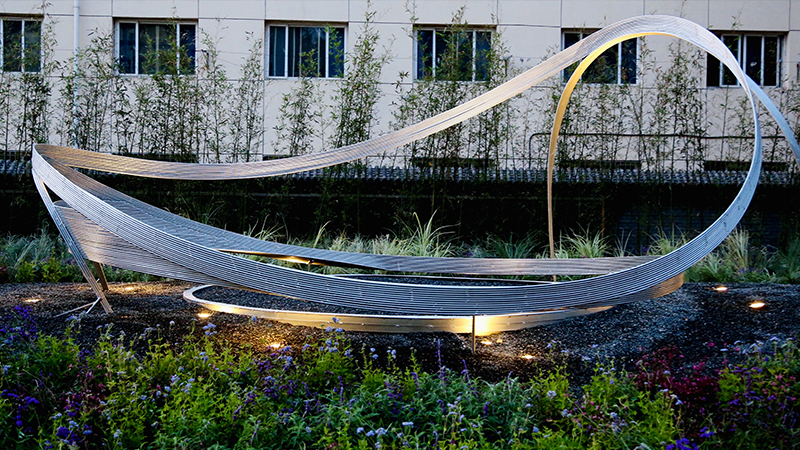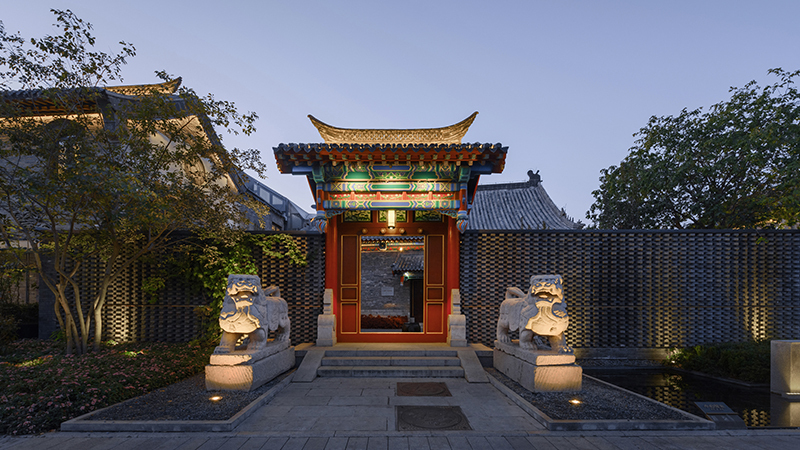| 公司: | Thorbjorn Andersson Sweco architects | 类型: | 景观 |
|---|---|---|---|
| 地区: | 瑞士 | 标签: | 庭院花园 |
药草园是一个可享受各种感官体验的地方,神秘的气味,变化的颜色和季节的变化,都能带来不同的体验,同时也能作为药理学研究的试验台
The Physic Garden is a place to celebrate sensuous phenomena of all kinds. It is a place where mystic scents, changing colors, and seasonal variety can be enjoyed and studied. It is also a test bed for pharmacological research.
总平面图▼
位于诺华校园的药草园是在古代修道院上建成的。在古代,僧侣们在那里研究关于植物的药物属性,这些知识为今天的研究工作提供了基础。这些地方常常是隐蔽的,是户外的实验室,与公共生活隔绝,但是蕴藏着极其重要的秘密
This Physic Garden at Novartis Campus is based on the monastery garden where, in ancient times, monks developed their knowledge about the pharmaceutical properties in plants, a knowledge that provided the foundation for today′s research efforts. These were often hidden places, laboratories in the outdoors, secluded from public life, containing secrets of utmost importance.
因此,诺华的药草园被隐藏起来,在空间组织上像一个剧场,或迷宫,花园是半封闭的,游客可以在高大的紫杉(红豆杉)和山毛榉(山毛榉)树篱之间曲折移动,花园会逐渐显露出来。“寻找真相的人,必定会找到真相”,这句话对今天的研究者,或是对中世纪修行的僧侣来说,一样重要
Consequently, the Physic Garden at Novartis is hidden, spatially organized as a theatre, or as a labyrinth, or as an onion with many layers. The garden is semi-enclosed, and the visitor enters through a zig-zag movement between backdrops of tall hedges of yew (Taxus) and beech (Fagus). The garden reveals itself step by step. The one who searches will find; a statement which is as relevant to the researcher of today as it was to the medieval monk.
在药草园中心,是一个下沉式的种植床,里面有31种药用植物,以条纹的形式排列。轻微日晒增加了植物的珍贵度,这些脆弱的标本被放置在低矮的花岗岩墙的框架内,不可触摸。从稍高的地方看过去,我们可以把花坛看成是一幅色彩丰富、纹理丰富的画,或者一块条纹地毯。没有栏杆的轻型结构桥梁横跨着,使参观者能够更仔细地观察植物,每一株植物的边缘都挂着一块青铜铭牌
Having arrived at the center, a sunken planting bed opens up, containing 31 species of pharmaceutical plants organized in a striped pattern. The slightly sunkenness of the basin adds to the preciousness of the plants, and placed inside the frame of a low granite wall, these fragile specimens become untouchable. They are viewed from slightly above, and we can read the flower bed as a colorful and textured painting or a striped carpet. Bridges of light construction, without railings, span the sunken bed, permitting the daring visitor a closer examination of the plants, each of which is labeled with an engraved bronze plaque mounted at the edge of the bed.
在凹陷的床的两侧有四个“原木架”,这是一堆成堆的原木,它们的形状与树篱的屏风相得益彰,也让人联想到“书架”,所选木材的类型代表了已从中提取物质并用于民族药理学的树种,总共有70种植物在物理园展出
Along the sides of the sunken bed are four “log racks”, a collection of logs stacked in piles whose forms complement the screens of hedges, and are also reminiscent of a library. The types of wood selected represent tree species from which substances have been extracted and used in ethnopharmacology . All in all, 70 plant species are on display in the Physic Garden.
项目名称:药草园
项目地点:诺华制药学校,巴塞尔,瑞士。
设计团队:Thorbjorn Andersson Sweco architects
团队成员:Pege Hillinge, Johan Krikstrom, Johnny Lindeberg,Markus Mostrom(图像),Pal Svensson(饮水机)。
委托方:诺华制药公司
合作伙伴:Schonholzer + Staufer GmbH/ Beat Rosch, Basler + Partner(结构工程)。
面积:2800㎡
开放时间:2012
摄影:Jan Raeber和Sweco Architects
Project: The Physic Garden
Location:Novartis Campus, Basel., Switzerland.
Landscape architect: Thorbj?rn Andersson with Sweco architects
Team:Pege Hillinge, Johan Krikstr?m, Johnny Lindeberg ,
Emma Norrman (plants), Therese Egnor (plants), Alexander Cederroth (light),
Markus Mostr?m (graphics), P?l Svensson (drinking fountains).
Client: Novartis Pharma
Consultants:Sch?nholzer + Staufer GmbH/ Beat R?sch, Basler + Partner (structural engineering).
Area: 2800 sqm
Opening: 2012
Photographs by: Jan Raeber and Sweco Architects
更新日期:2019-09-30 15:52:33
非常感谢 Thorbjorn Andersson Sweco architects 带来的精彩项目, 查阅更多Appreciations towards Thorbjorn Andersson Sweco architects for sharing wonderful work on hhlloo. Click to see more works!














